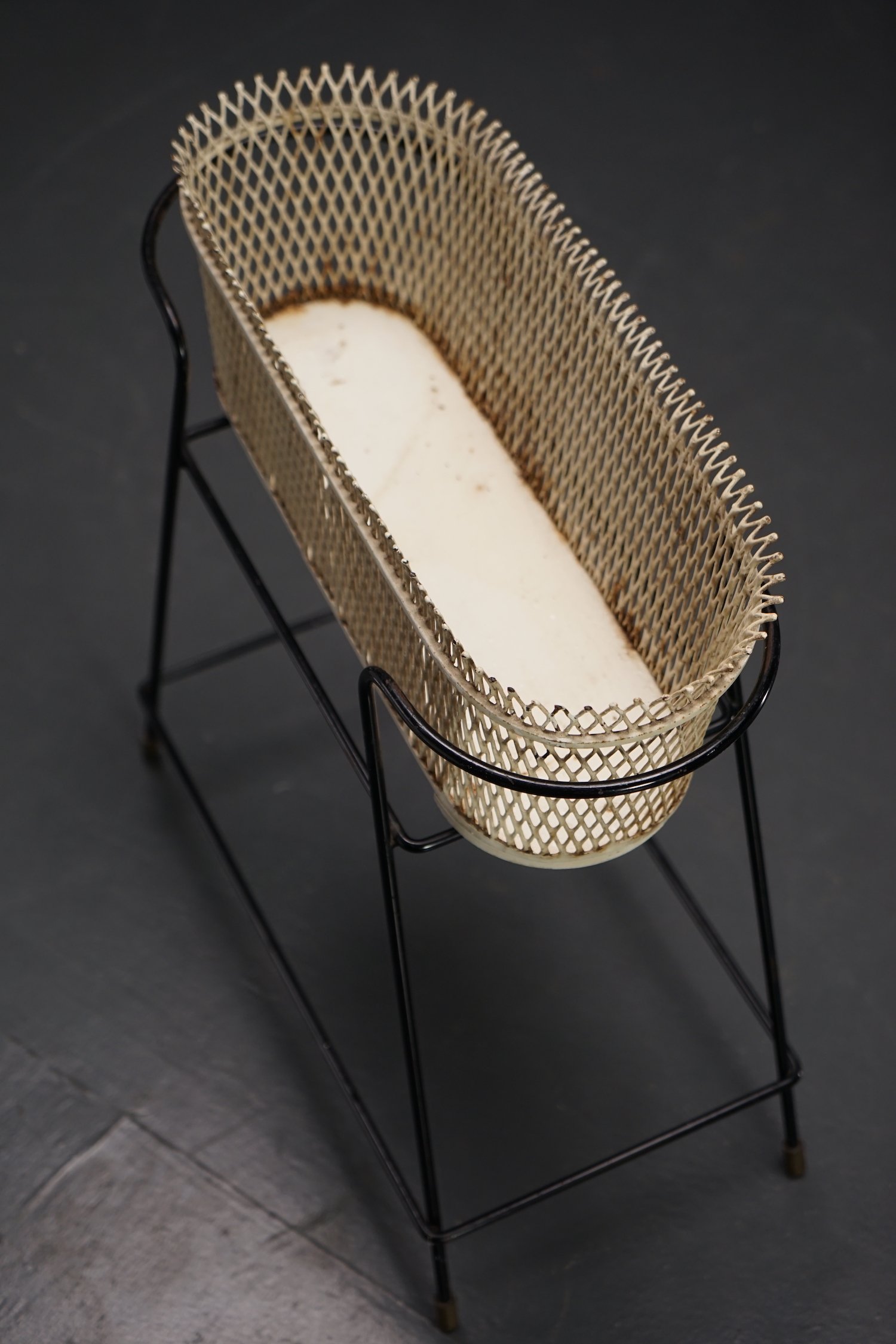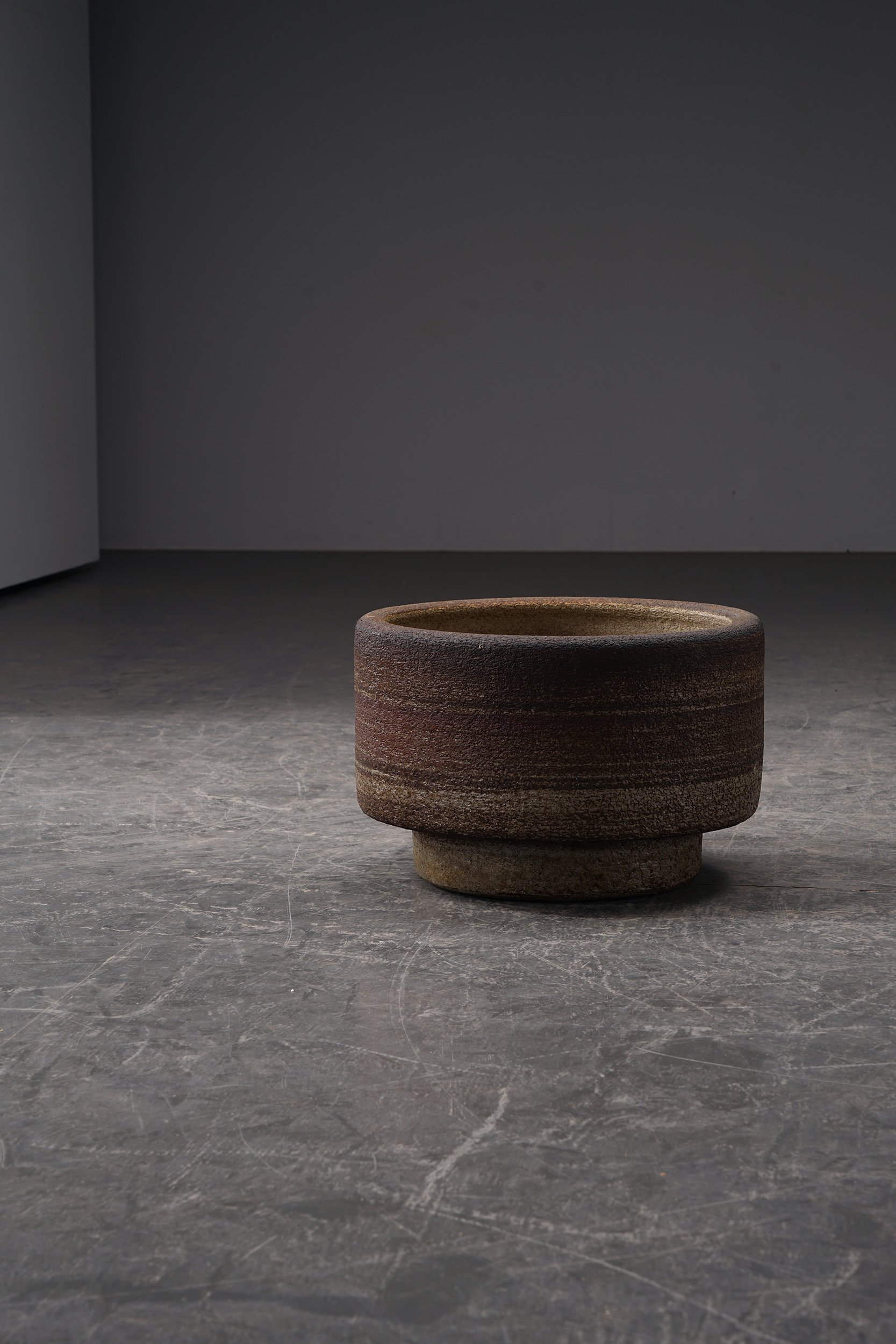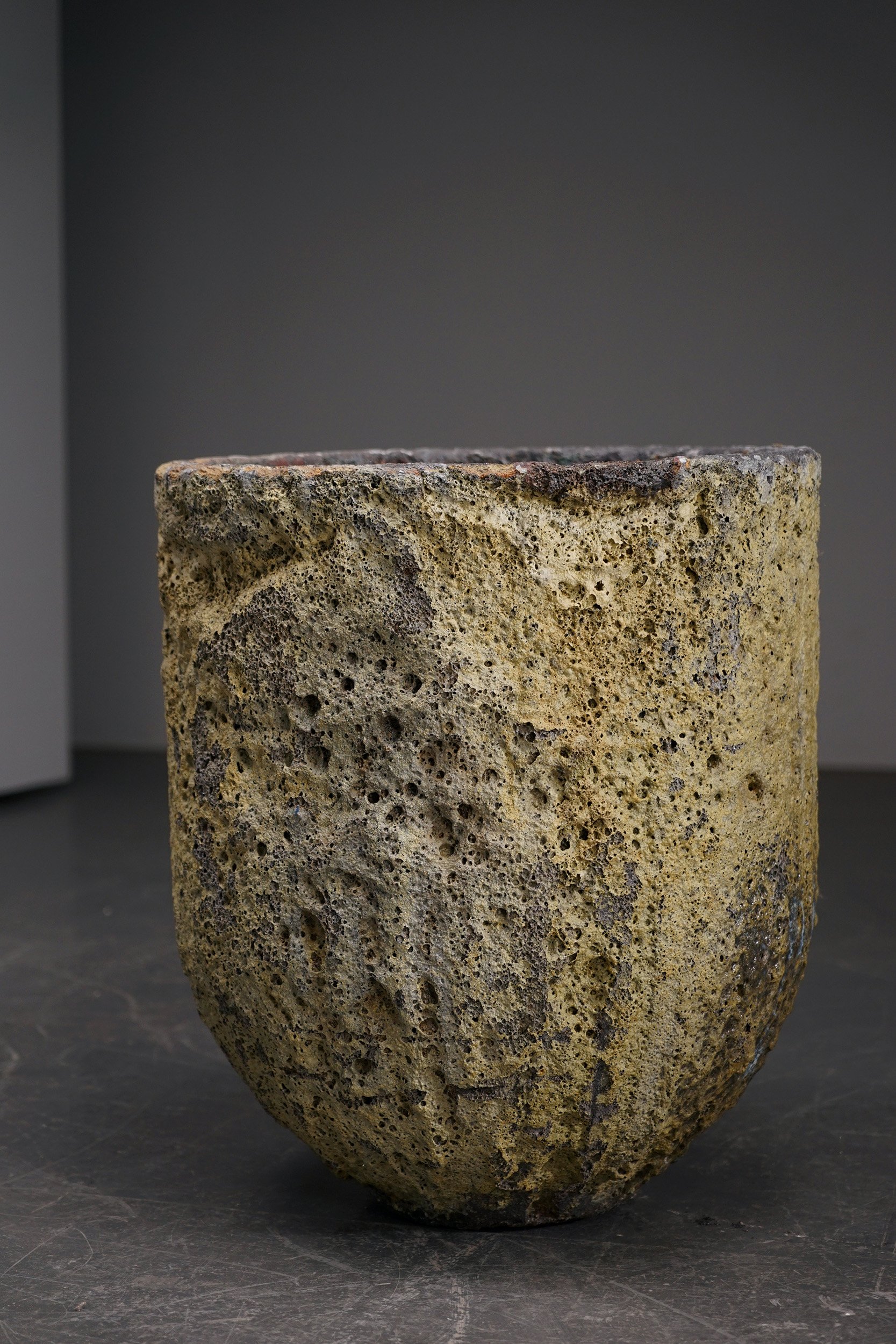Mid-Century Planter by Mathieu Matégot
Mathieu Matégot (1910-2001)
period: 1950s
origin: France
dimensions (cm): h56 x w50 x d25 cm
dimensions (inch): h22,05 x w19,69 x d9,84 in
material: brass, metal
Thanks to his exceptionally refined furniture—at times almost baroque, but always more graceful and sophisticated than frivolous—Mathieu Matégot holds a particular place in the range of Mid-Century Modern design. Born in Hungary, the still young Matégot settled in Paris just after the roaring twenties, where he developed into a versatile craftsman. His use of perforated sheet metal, often with quatrefoil patterns—like with this planter—or carefully pleated into rigitulle, became his trademark. It allowed him to give ordinary living, kitchen, and garden furniture an irresistible flair of elegance and lightness, partly influenced by the revival of the decorative arts in that time, but also the result of his own experiments with metal.
Today, Matégot's designs are regarded as very costly and rare, as they were often produced exclusively and only in modest amounts.
Mathieu Matégot (1910-2001)
period: 1950s
origin: France
dimensions (cm): h56 x w50 x d25 cm
dimensions (inch): h22,05 x w19,69 x d9,84 in
material: brass, metal
Thanks to his exceptionally refined furniture—at times almost baroque, but always more graceful and sophisticated than frivolous—Mathieu Matégot holds a particular place in the range of Mid-Century Modern design. Born in Hungary, the still young Matégot settled in Paris just after the roaring twenties, where he developed into a versatile craftsman. His use of perforated sheet metal, often with quatrefoil patterns—like with this planter—or carefully pleated into rigitulle, became his trademark. It allowed him to give ordinary living, kitchen, and garden furniture an irresistible flair of elegance and lightness, partly influenced by the revival of the decorative arts in that time, but also the result of his own experiments with metal.
Today, Matégot's designs are regarded as very costly and rare, as they were often produced exclusively and only in modest amounts.
Mathieu Matégot (1910-2001)
period: 1950s
origin: France
dimensions (cm): h56 x w50 x d25 cm
dimensions (inch): h22,05 x w19,69 x d9,84 in
material: brass, metal
Thanks to his exceptionally refined furniture—at times almost baroque, but always more graceful and sophisticated than frivolous—Mathieu Matégot holds a particular place in the range of Mid-Century Modern design. Born in Hungary, the still young Matégot settled in Paris just after the roaring twenties, where he developed into a versatile craftsman. His use of perforated sheet metal, often with quatrefoil patterns—like with this planter—or carefully pleated into rigitulle, became his trademark. It allowed him to give ordinary living, kitchen, and garden furniture an irresistible flair of elegance and lightness, partly influenced by the revival of the decorative arts in that time, but also the result of his own experiments with metal.
Today, Matégot's designs are regarded as very costly and rare, as they were often produced exclusively and only in modest amounts.





















































































